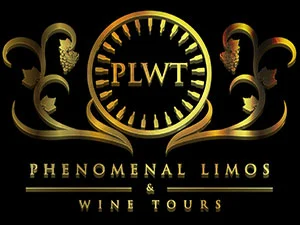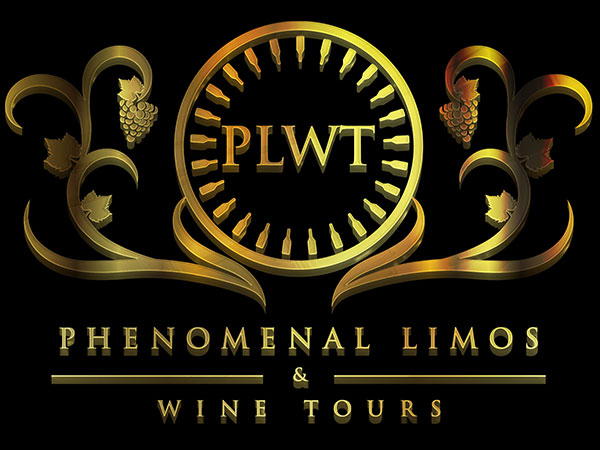
Wine elevates an experience, but choosing the right bottle can feel daunting. Whether it’s a casual gathering, a celebratory dinner, or simply unwinding after a long day, there’s a perfect wine to complement the mood. Consider the formality of the event, the food pairings, and your personal taste for a delightful selection.
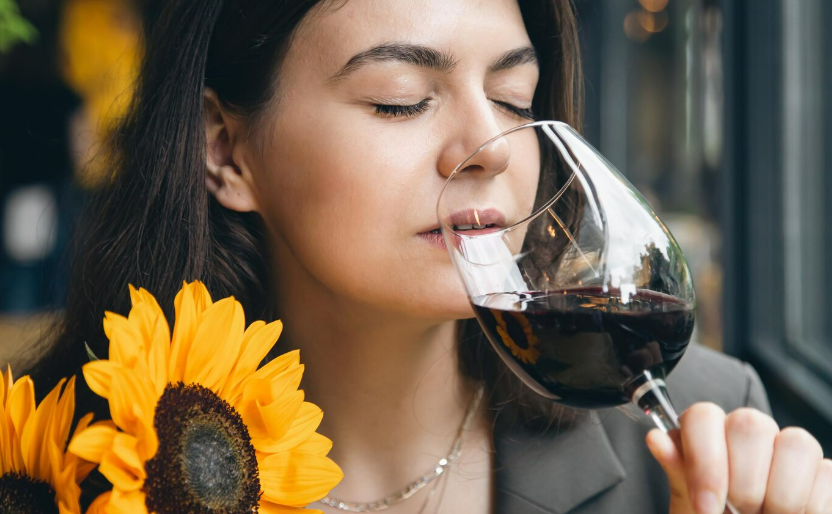
The Perfect Wine to Set the Mood
Wine has the remarkable ability to elevate an experience, transforming an ordinary gathering into something truly memorable. It’s more than just a beverage; it’s a conversation starter, a mood enhancer, and the perfect complement to a delicious meal. But with so many varieties and styles of wine available, choosing the right bottle can feel overwhelming.
Pairing wine with specific events
The key lies in pairing wine with the specific occasion. Just like you wouldn’t wear sweatpants to a wedding, the wine you choose should reflect the atmosphere you want to create. Imagine a lively brunch with friends – a crisp, refreshing Sauvignon Blanc perfectly complements the light and flavorful dishes, while its bright acidity keeps the energy high. Contrast that with a romantic dinner for two – a smooth, full-bodied Pinot Noir adds a touch of luxury and romance, its rich flavors harmonizing with the decadent meal.
This guide equips you to navigate the world of wine pairing for any occasion. We’ll explore different scenarios, from celebratory events brimming with joy to intimate dinners seeking a touch of elegance. For each, we’ll delve into specific wine recommendations, considering not just the food pairings but also the overall mood you want to cultivate.
Whether it’s a casual get-together with friends, a momentous holiday celebration, or simply a quiet evening of unwinding, there’s a perfect wine waiting to enhance the experience. So, get ready to discover how to choose the ideal bottle to set the mood and elevate your next gathering, transforming it into an occasion to truly savor.
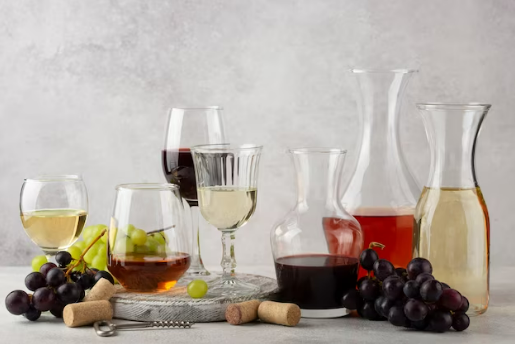
Wine Types for Different Occasions
Formal Events & Fine Dining
Formal events and fine dining experiences call for wines that are both sophisticated and capable of complementing complex flavors. These occasions are about elegance, so the chosen wines should elevate the experience without overwhelming the palate.
Red Wine: Bold Flavors for Rich Dishes
Cabernet Sauvignon: The king of red wines, Cabernet Sauvignon boasts bold tannins and intense flavors of black currant, blackberry, and cedar. Its full-bodied character stands up well to hearty red meat dishes like grilled steaks, roasted lamb, or braised short ribs. Look for bottles aged in oak barrels, which add notes of vanilla, spice, and smoke for an extra layer of complexity. Bordeaux blends, which often feature Cabernet Sauvignon alongside Merlot, Cabernet Franc, and other grapes, offer similar boldness with a touch more finesse.
Merlot: A slightly softer option compared to Cabernet Sauvignon, Merlot offers a smoother mouthfeel with flavors of plum, cherry, and subtle earthiness. While still full-bodied, it has less intense tannins, making it a more approachable choice for a wider range of palates. Merlot pairs beautifully with roasted chicken, duck breast, and hearty pasta dishes with red meat sauce.
White Wine: Elegant Options for Lighter Proteins
Chardonnay: Chardonnay can range from light and unoaked to rich and buttery depending on its origin and production style. Unoaked Chardonnay, with its crisp acidity and notes of citrus and green apple, pairs excellently with lighter seafood dishes like grilled fish, scallops, or shellfish. Oaked Chardonnay, aged in oak barrels, develops richer flavors of vanilla, butter, and toast, making it a great complement to creamy pasta dishes, roasted poultry with lighter sauces, and even some vegetarian options.
Sauvignon Blanc: A refreshingly crisp and acidic white wine, Sauvignon Blanc is known for its distinctive notes of grapefruit, lime, and grassy undertones. This lighter-bodied wine shines alongside appetizers, salads, and lighter fish dishes like sole or cod.
Casual Gatherings & Weeknight Dinners: Unwinding with Good Company
Casual gatherings and weeknight dinners are all about enjoying good company without the formality of a special occasion. The focus here is on easy-drinking wines that complement a variety of dishes and don’t overpower the conversation.
Rosé: The Alluring All-Star
Rosé, a blush-colored wine made from red grapes with minimal skin contact, is a true chameleon. Its versatility makes it a perfect choice for casual gatherings. Here’s how to navigate the world of rosé:
- Dry vs. Fruity: Rosé can range from dry and crisp to light and fruity. Opt for a dry rosé like a Provence rosé from France if you’re serving grilled chicken, salmon, or lighter pasta dishes. For a more casual atmosphere with charcuterie boards or lighter salads, a fruitier rosé like a Zinfandel-based rosé from California can be delightful.
- Food Pairings: Rosé’s versatility shines with a variety of dishes. Its acidity cuts through the richness of creamy sauces and complements lighter proteins like fish, chicken, and pork. It’s also a fantastic partner for vegetarian and vegan dishes, especially those featuring grilled vegetables or tofu.
Light-Bodied Reds: Easy Elegance for Casual Meals
For those who prefer red wine, there are some fantastic light-bodied options that are perfect for casual settings.
- Pinot Noir: Often referred to as the “red wine for white wine drinkers,” Pinot Noir is known for its delicate fruit flavors like strawberry and cherry. This light-bodied red pairs beautifully with a wide range of dishes, including grilled salmon, roasted chicken, and even lighter cuts of red meat like pork tenderloin. For a truly casual gathering, consider serving Pinot Noir slightly chilled for a refreshing twist.
- Beaujolais: Hailing from France’s Beaujolais region, these Gamay-based wines are known for their bright acidity and juicy fruit flavors. Beaujolais Nouveau, released each year on the third Thursday of November, is a particularly festive option for casual gatherings. These wines pair well with charcuterie boards, roasted poultry, and lighter mushroom dishes.
Crisp Whites: Refreshing Companions for Lighter Fare
Crisp white wines are ideal for casual gatherings, especially during warmer months. Their refreshing acidity cuts through richer dishes and complements lighter fare perfectly.
- Pinot Grigio: A popular choice due to its easy-drinking nature, Pinot Grigio offers a light and dry profile with hints of citrus and pear. It’s a fantastic partner for lighter pasta dishes, salads, and seafood.
- Riesling: Don’t be intimidated by Riesling’s reputation for sweetness! There’s a wide range of styles available, from dry to off-dry. For casual gatherings, opt for a dry Riesling with bright acidity and notes of apple, peach, and minerality. This wine pairs beautifully with spicy dishes, Asian cuisine, and anything involving pork.
Celebrations & Special Occasions
Sparkling Wine: Bubbly Joy for Festive Moments
Sparkling wines are the undisputed champions of celebrations. Their effervescence adds a touch of excitement and festivity to any occasion, from birthdays and graduations to weddings and New Year’s Eve. Here’s a breakdown of some popular sparkling wine options:
- Champagne: The quintessential celebratory wine, produced in the Champagne region of France. Champagne undergoes a secondary fermentation in the bottle, creating its signature fine bubbles and complex flavors. Look for Blanc de Blancs (made from white grapes) for a lighter style, Blanc de Noirs (made from red grapes) for a richer body, or Rosé Champagne for a touch of fruitiness.
- Cava: A Spanish sparkling wine produced using a similar method to Champagne, but at a more accessible price point. Cava offers a range of styles, from dry and crisp Brut to sweeter styles like Semi-Seco.
- Prosecco: This Italian sparkling wine hails from the Veneto region and is known for its light, fruity character and lively bubbles. Prosecco is typically drier than Cava and perfect for casual celebrations or as an aperitif.
Vintage Wines: Aged Selections for Momentous Events
For truly special occasions that call for a memorable experience, consider a bottle of vintage wine. These wines are produced from grapes harvested in a particularly exceptional year, resulting in concentrated flavors and increased complexity. Here are some classic examples:
- Red Bordeaux: Wines from Bordeaux, France, particularly those classified as Left Bank (Médoc, Graves) or Right Bank (Pomerol, Saint-Émilion), are known for their aging potential. Cabernet Sauvignon blends from these regions develop rich, layered flavors with age, making them ideal for milestone celebrations or anniversaries.
- Barolo: This robust Italian red wine, produced in the Piedmont region from the Nebbiolo grape, is another excellent choice for aging. Barolo undergoes a lengthy maturation process, resulting in a wine with intense aromas of tar, leather, and dried fruit, alongside powerful tannins. Its complexity and long aging potential make it perfect for momentous occasions that deserve a truly special bottle.

Pairing Wine with Food: A Symphony of Flavors
The Art of Pairing: Wine pairing is the art of selecting a wine that complements and enhances the flavors of your food. Think of it like a symphony, where the wine and food play different instruments, creating a harmonious and delightful experience. When the pairing is successful, the flavors of both the wine and the food are elevated, leaving you with a more complex and enjoyable taste sensation.
Understanding the Impact: Here’s how food and wine interact to influence your taste perception:
- Acidity: Acidity in wine cuts through richness and fat in food, creating a cleansing effect. Think of a squeeze of lemon brightening up a heavy cream sauce.
- Tannins: These naturally occurring compounds in red wine can create a drying sensation on your palate. Pairing them with fatty cuts of meat helps balance this astringency.
- Sweetness: Sweetness in wine can complement savory or spicy dishes. For example, a touch of sweetness in a Riesling offsets the heat of Thai curry.
- Fruit Flavors & Aromas: Matching the fruit flavors in wine with similar notes in the food can create a sense of harmony. For example, a Sauvignon Blanc with hints of grapefruit pairs beautifully with grilled fish that has a similar citrusy aroma.
Pairing with Different Food Types
Proteins:
- Red Meat: Bold red wines like Cabernet Sauvignon or Merlot stand up well to the richness of red meat, particularly grilled steaks, roasts, or braised dishes. Their tannins help soften the perception of fat.
- Poultry: For lighter proteins like chicken or turkey, consider medium-bodied reds like Pinot Noir or Gamay. Their delicate fruit flavors complement the poultry without overpowering it. White wines like Chardonnay can also be a good choice, especially when paired with creamy sauces or roasted vegetables.
- Seafood: Sparkling wines like Champagne or Prosecco are fantastic companions to lighter seafood like oysters, shrimp, or scallops. Their acidity cuts through the briny flavor of the fish. For richer fish like salmon, a crisp Sauvignon Blanc or Pinot Grigio can be delightful.
Cheeses:
- Soft Cheeses (Brie, Camembert): Pair these creamy cheeses with sparkling wines or off-dry white wines like Riesling. The acidity cuts through the richness and balances the sweetness of the cheese.
- Hard Cheeses (Parmesan, Cheddar): Full-bodied reds like Cabernet Sauvignon or Zinfandel can hold their own against the bold flavors of hard cheeses. The tannins balance the sharpness of the cheese.
- Blue Cheeses (Roquefort, Gorgonzola): Sweet wines like Sauternes or Port can tame the strong, pungent flavors of blue cheese.
Desserts:
- Chocolate: For dark chocolate desserts, consider a fortified wine like Port or a full-bodied red wine like Shiraz. Their sweetness and boldness complement the richness of the chocolate. For milk chocolate, a slightly sweet dessert wine like Moscato d’Asti can be an excellent choice.
- Fruity Desserts: Match sweet dessert wines with similarly flavored fruits. For example, pair a Riesling with a peach pie or a late-harvest Gewürztraminer with a fruit crumble.
- Creamy Desserts: Sparkling wines or off-dry white wines like Riesling can refresh the palate and balance the richness of creamy desserts like cheesecake or panna cotta.

Choosing Wine Based on Personal Preference
While the occasion and food pairings provide a great starting point, your personal taste is the ultimate guide to selecting the perfect wine. Here’s how to navigate the world of wine based on your unique preferences:
Understanding Your Palate
- Sweet vs. Dry: Do you gravitate towards sweeter beverages like fruit juices or cocktails? Or do you prefer the dryness of black tea or unsweetened coffee? This inclination translates to wine. Explore sweeter white wines like Riesling, Moscato, or Gewürztraminer if you enjoy sugary flavors. For a drier experience, seek out Sauvignon Blanc, Pinot Grigio, or a dryer Chardonnay. Reds can also range in sweetness. Zinfandel and some Grenache styles offer a touch of sweetness, while Cabernet Sauvignon or Barolo are known for their dryness.
- Fruity vs. Earthy: Consider the flavors you enjoy in other drinks and foods. Do you appreciate bright, citrusy notes, or do you prefer deeper, earthier tones? If citrus and stone fruits appeal to you, explore Sauvignon Blanc with its grapefruit and lime zest character, or Pinot Noir with its notes of cherry and raspberry. Wines with earthy characteristics often come from specific regions or grape varietals. For example, Cabernet Sauvignon from Bordeaux often exhibits notes of cedar and tobacco, while Syrah from the Rhône Valley can present aromas of black pepper and leather.
- Light-bodied vs. Full-bodied: How much weight do you prefer in your beverages? Lighter-bodied wines are known for their refreshing and easy-drinking nature. Think Pinot Noir with its silky texture, or a crisp Sauvignon Blanc. Full-bodied wines, on the other hand, have a heavier mouthfeel with bolder flavors. Cabernet Sauvignon’s tannins create a grippiness, while a well-aged Rioja can feel almost chewy on the palate.
Embracing Exploration
- Start with Familiar Flavors: If you’re new to wine exploration, consider wines with flavor profiles similar to beverages you already enjoy. For instance, a fan of citrusy cocktails might appreciate a Sauvignon Blanc, while someone who enjoys dark chocolate may find enjoyment in a full-bodied Cabernet Sauvignon.
- Explore Varietals and Regions: Once you have a basic understanding of your preferences, venture out and explore different grape varietals and regions. Each varietal offers unique characteristics. Merlot, for example, is known for its smooth tannins and plumy flavors, while Malbec presents notes of black fruit and spice. Exploring regions within a varietal adds another layer of complexity. French Pinot Noir tends to be lighter-bodied and earthier than its California counterpart, which often boasts riper fruit flavors.
- Tasting Notes as a Guide: Wine labels and store descriptions often include tasting notes that describe the aroma and flavor profile of the wine. These notes can be a helpful tool, but remember, they are subjective. Don’t be afraid to experiment and find what resonates with your palate.
Developing Your Wine Savvy
- Attend Wine Tastings: Many wine shops and restaurants host wine tastings, offering a chance to sample a variety of wines in small pours. This is a fantastic way to explore different styles and discover new favorites in a social setting.
- Join a Wine Club: Wine clubs deliver curated selections to your doorstep, allowing you to explore different regions and varietals at your own pace.
- Read Wine Reviews: Reading reviews from reputable wine publications or blogs can provide valuable insights into specific wines and their characteristics.
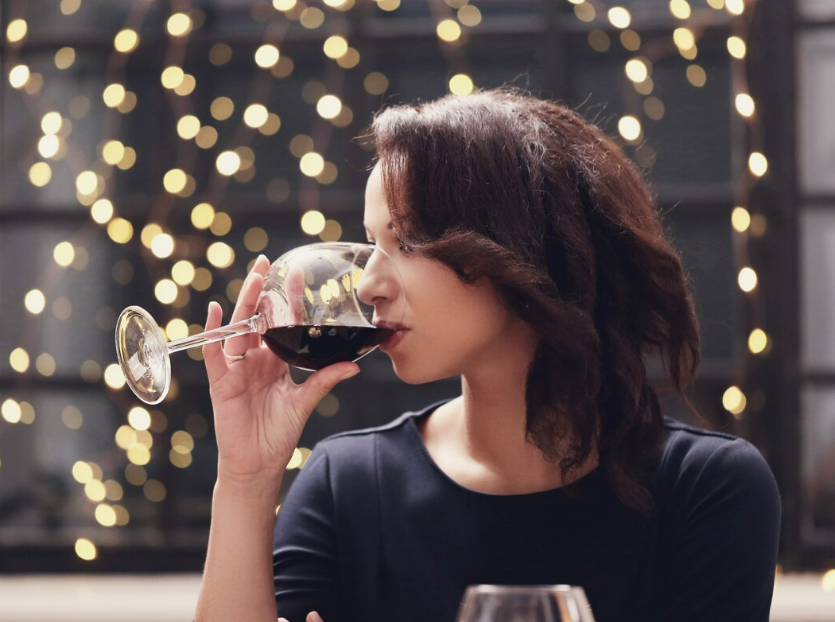
Unwinding with Wine: A Sip of Serenity
After a long day, there’s a certain magic to unwinding with a glass of wine. It’s a ritual that allows you to shed the stress and step into a space of relaxation. Here’s why wine can be such a delightful companion for solo downtime:
- The Ritual of Relaxation: The act of pouring a glass, choosing a comfortable spot, and taking a thoughtful sip can be a powerful stress reliever in itself. It’s a mindful pause from the day’s busyness, allowing you to focus on the present moment.
- The Science of Sipping: Wine contains small amounts of resveratrol, an antioxidant with potential stress-reducing properties. While moderation is key, a glass can help your body wind down.
- The Power of Pleasure: Wine offers a sensory experience beyond simply quenching thirst. The aroma, taste, and texture can be deeply pleasurable, triggering the release of endorphins – your body’s natural feel-good chemicals.
Wine Recommendations for Unwinding
- Light-Bodied Reds: Opt for Pinot Noir, Gamay (Beaujolais), or Valpolicella. These reds are lower in tannins, which can feel astringent, making them smooth and easy-drinking. Their subtle fruit flavors and lighter body won’t weigh you down after a long day.
- Fruity Whites: Aromatic whites like Riesling, Gewürztraminer, or Moscato offer a refreshing sweetness without being overly cloying. Their vibrant fruit notes and lighter body are perfect for unwinding.
- Sparkling Wines: A chilled glass of Prosecco or Cava can add a touch of festivity to your solo relaxation time. The gentle bubbles create a light and celebratory feel, perfect for marking the end of the day.
Remember: Moderation is key. Enjoying a single glass allows you to experience the benefits of wine without the drawbacks of overconsumption.
Finding Your Perfect Pour on a Budget
Wine shouldn’t have to break the bank! Here are some tips for enjoying quality wines without overspending:
- Explore Lesser-Known Varietals and Regions: Instead of sticking to the “big name” wines, venture into the exciting world of lesser-known varietals or up-and-coming wine regions. For example, try a Carménère from Chile, a Barbera from Italy, or a Grüner Veltliner from Austria. These grapes offer unique taste profiles and often come with a more affordable price tag.
- The Value of “Second Labels”: Many prestigious wineries produce “second labels” – wines made with grapes from younger vines or different vineyard blocks. These wines often represent incredible value, offering the quality and style of the winery at a lower price point. Look for these on the shelves alongside their more famous counterparts.
- Grocery Store Gems: While wine shops offer a curated selection, don’t underestimate your local grocery store. Many larger grocers have dedicated wine sections with knowledgeable staff who can help you find a good value based on your preferences. Explore their weekly specials or “staff picks” for hidden gems.
Additional Tips:
- Pair Up with Food: Even a simple cheese plate or a bowl of fruit can elevate your solo wine experience. Pairing lighter cheeses like brie or goat cheese with fruity whites or a simple charcuterie board with a light-bodied red adds another layer of enjoyment.
- Invest in a Wine Glass: Drinking from a proper wine glass allows you to fully appreciate the aroma and flavors of the wine. You don’t need an expensive set, but a single good quality glass will enhance your experience.
Conclusion
The world of wine is vast and exciting, offering a delightful companion for every occasion. With just a little knowledge, you can navigate the wine aisle with confidence, selecting the perfect bottle to elevate your next gathering, celebration, or simply a relaxing evening at home. Remember, the most important factor is enjoyment, so explore different styles, discover your preferences, and most importantly, sip responsibly!
For those who want to delve deeper, there’s a wealth of resources available online and at local wine shops – don’t hesitate to ask for recommendations or attend wine tastings to expand your palate. So next time you’re looking to add a touch of magic to a moment, remember the versatility and joy that a well-chosen bottle of wine can bring.
